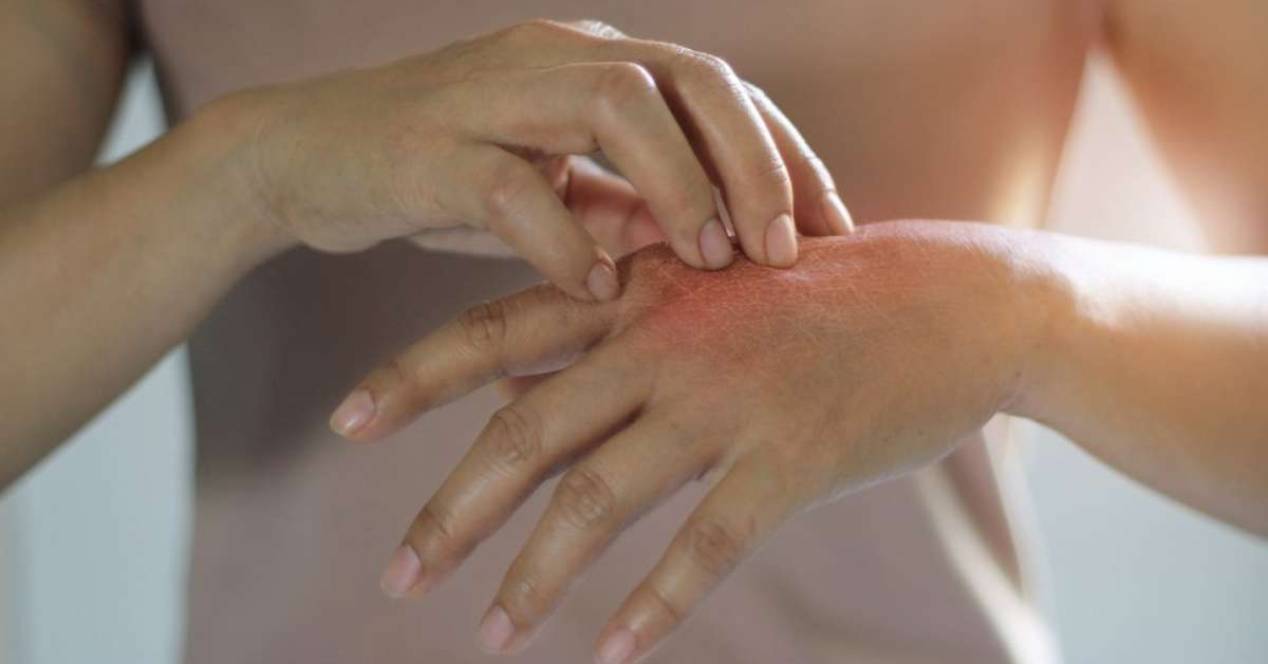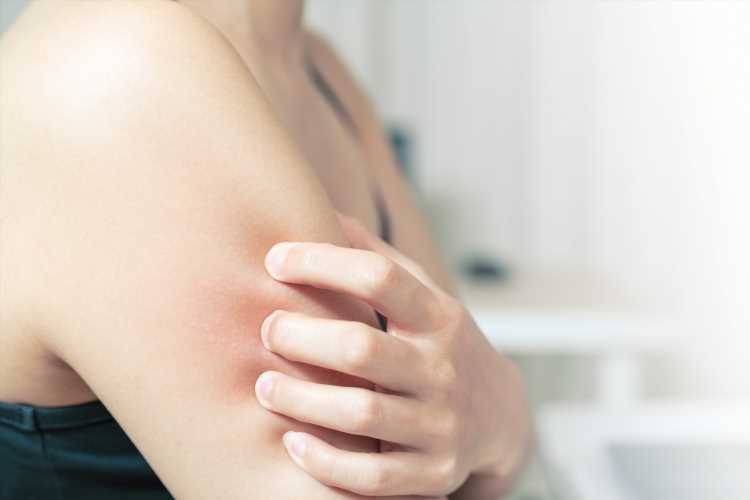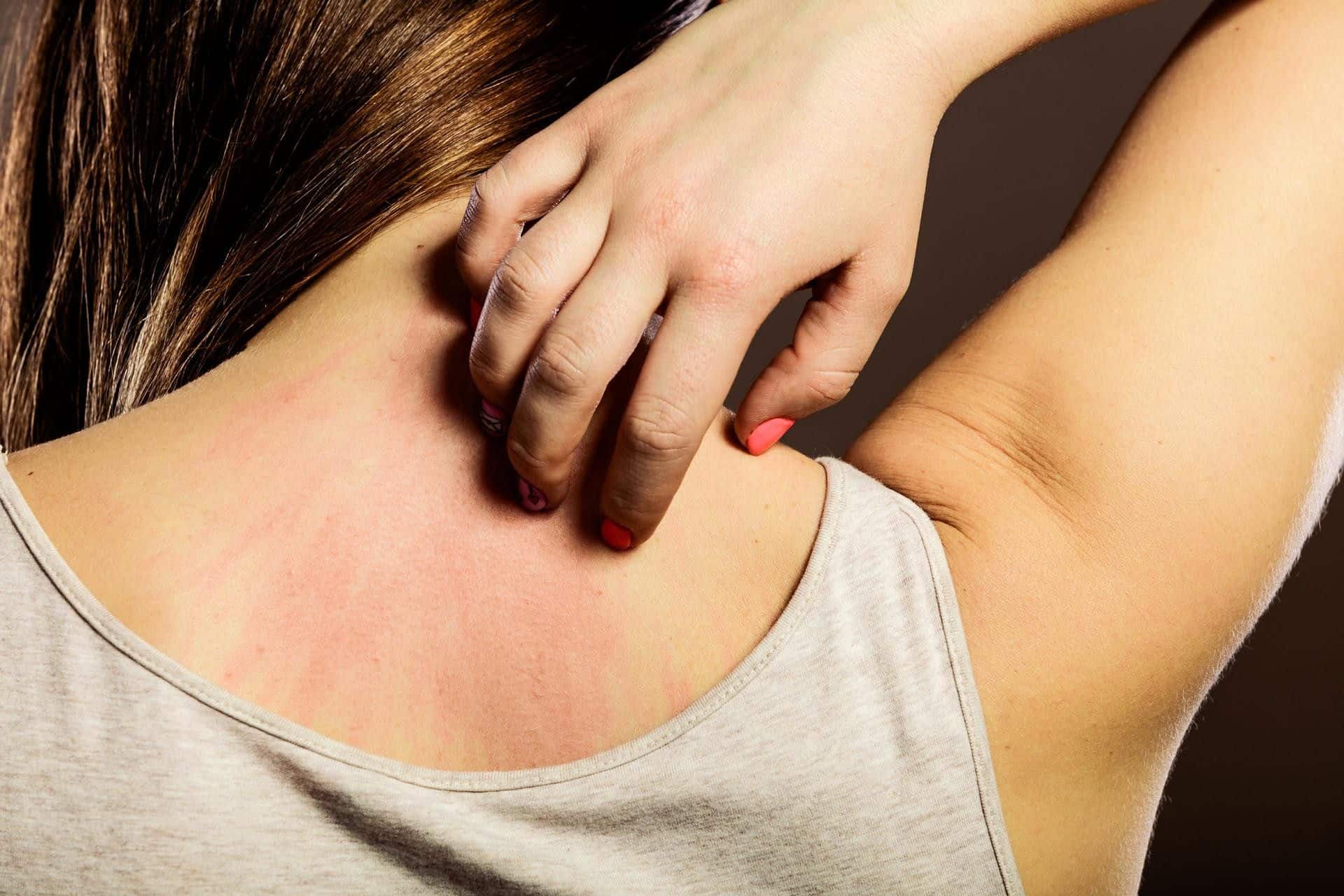
Eczema, itching and scaly skin are clear symptoms that something is wrong with our skin. Psoriasis is a skin disease that affects millions of people worldwide, although it is not contagious between humans.
This disease cannot transmit the skin condition from one person to another. Touching a psoriatic lesion on another person will not cause us to develop the condition, but it is convenient to learn more about this type of atopic problem.
What is psoriasis?
Although some think that its appearance is random, the truth is that it is a chronic autoimmune disease that causes the rapid accumulation of skin cells, causing flaking on the surface of the skin. Inflammation and redness around the scales is quite common. These typical psoriatic conditions are silvery-white and develop in thick red patches. Sometimes these patches crack and bleed, especially when we have very dry skin or scratch it.
Psoriasis is the result of a process of accelerated skin production. Usually, skin cells grow deep into the skin and slowly rise to the surface. They eventually fall off, although the typical life cycle of a skin cell is one month.
In people with this disease, the production process can occur in just a few days. As a consequence, the skin cells do not have time to fall off. This rapid overproduction leads to the accumulation of skin cells. The scales typically develop in joints, such as the elbows and knees. Although they can also develop in other parts of the body, such as the hands, feet, neck, scalp and face. Less common types of psoriasis affect the nails, mouth, and the area around the genitals.
Most common types
This skin disease has many different types. A specialist must thoroughly assess the cases to determine the best treatment for this type of psoriasis. Here we reveal the most common examples:
- in plates. Plaque psoriasis is the most common type. Experts estimate that about 80 percent of people with the condition have this type. It causes red, inflamed patches that cover areas of the skin. These patches are usually covered with whitish-silver scales or plaques. Plaques are found on the elbows, knees, and scalp.
- Guttata. This is common in childhood and causes small pink spots. The most common sites of guttate psoriasis include the torso, arms, and legs. These spots are rarely thick or raised like the plaque type.
- Pustular. It is more common in adults. It causes white, pus-filled blisters and large areas of red, inflamed skin. This type is typically located in smaller areas of the body, such as the hands or feet, but can be widespread.
- Reverse. In this case, shiny areas of red, shiny, inflamed skin are formed. Patches of inverse psoriasis develop under the armpits or breasts, in the groin, or around the skin folds of the genitals.
- erythrodermic. This is a very rare and serious type of psoriasis. It usually covers large sections of the body at once and the skin appears sunburned. The scales that develop are shed in large sections or sheets. It is not uncommon for a person with this type of psoriasis to have a fever or become seriously ill. It is a type that can be life-threatening, so people should see a specialist doctor urgently.

Why does it appear? Causes and factors
It is not yet too evident what are the causes of the appearance of psoriasis. However, thanks to research we are clear that there are two key factors: genetics and the immune system.
Immune system
This is an autoimmune disease. Autoimmune conditions mean that the body attacks itself. In the case of psoriasis, white blood cells, known as T cells, mistakenly attack skin cells.
In a normal body, white blood cells are used to attack and destroy invading bacteria and fight infection. This misguided attack causes the skin cell production process to speed up. The accelerated production of skin cells causes new skin cells to develop too quickly. They are pushed to the surface of the skin, where they clump together. This results in that buildup of plaques that is associated with psoriasis. Attacks on skin cells also cause red, inflamed areas of skin to develop.
Genetics
Some people inherit genes that make them more likely to develop this disease. If you have an immediate family member with the skin condition, your risk of developing psoriasis is higher. However, the percentage of people who suffer from this disease and have a genetic predisposition is small. Only 2 to 3 percent of people with the gene develop the disease, although it is still part of the causative factors.
Other triggers
There are external agents that can start a new outbreak of psoriasis. These triggers are not the same for everyone. They can also change over time. The most common triggers include:
- Stress. Unusually high stress can trigger a flare. If you learn to reduce and control it, you can improve and possibly prevent flare-ups.
- Alcohol. Excessive alcohol consumption can trigger psoriasis flare-ups. If you consume alcohol in excess, the outbreaks may be more frequent. That's why cutting back on alcohol is smart for more than just your skin, too.
- Injury. An accident, cut or scratch can cause an outbreak. Injections, vaccinations, and sunburn can also trigger it.
- Drugs. Some medications are considered disease triggers. Some examples are lithium, antimalarial drugs, or high blood pressure medication.
- Infection. Psoriasis is mostly caused by the immune system mistakenly attacking healthy skin cells. If you're sick, your immune system will kick into gear to fight off the infection. This could start another flare-up of psoriasis.
Most common symptoms of psoriasis
The signs of appearance differ from one person to another and depend on the type that is suffered. Patches of psoriasis can be as small as a few scales on the scalp or elbow, or cover most of the body. Not everyone will experience every symptom, and some may even have completely different ones if they have a less common type.
Most people with this disease go through ciclos of symptoms. The condition can cause severe symptoms for a few days or weeks, and then they may go away and be almost unnoticeable. In the event that it is worsened by a common psoriasis trigger, the condition may return within a few days. Sometimes, although it is rare, the symptoms disappear completely. However, that doesn't mean that psoriasis won't come back, it just doesn't show symptoms for now.
The most common symptoms of plaque psoriasis are:
- Red, raised, inflamed patches of skin
- Whitish-silver scales or plaques on the red spots
- Dry skin that can crack and bleed
- pain around wounds
- Itching and burning sensation
- Thick and pitted nails
- Painful and swollen joints

Treatments to reduce symptoms
Unfortunately, psoriasis has no cure. The treatments proposed by specialist doctors aim to reduce inflammation and scales, delay the growth of skin cells and eliminate plaques. Most people with moderate to severe psoriasis will benefit from combining several treatments. And while some people can use the same treatment for their entire lives, others may need to switch treatments occasionally if their skin stops responding to what they're using.
Topical Treatments for Psoriasis
Creams and ointments applied directly to the skin may be helpful in reducing mild to moderate psoriasis. The best-known topical treatments are topical corticosteroids, topical retinoids, anthralin (a drug to slow the production of skin cells), vitamin D analogues, salicylic acid, and moisturizing creams.
Medications and light therapy
People with moderate to severe psoriasis and those who have not responded well to other types of treatment may need oral or injected medications. Many of these drugs have serious side effects and doctors often prescribe them for short periods of time. The best known are methotrexate, cyclosporine (Sandimmune), biologics, and retinoids.
Light therapy is a treatment that uses ultraviolet or natural light. Sunlight kills overactive white blood cells that attack healthy skin cells and cause rapid cell growth. Both UVA and UVB light can help reduce the symptoms of mild to moderate psoriasis.